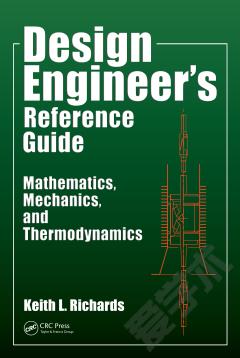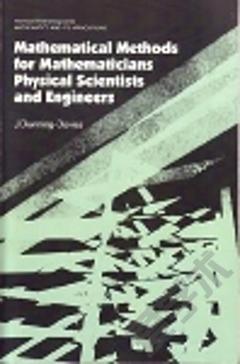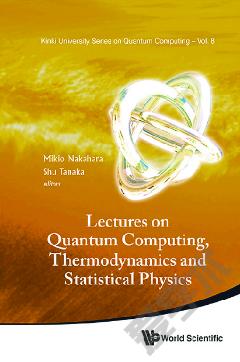Configurational Forces —— Thermomechanics, Physics, Mathematics, and Numerics
----- 构形力:热力学,物理,数学,和数值
Introduction Continuum Mechanics in the Twentieth Century The Objective of This Book The Contents of This Book Historical Note Standard Continuum Mechanics Theory of Motion and Deformation Basic Thermomechanics of Continua Examples of Thermomechanical Behaviors Eshelbian Mechanics for Elastic Bodies The Notion of Eshelby Material Stress Eshelby Stress in Small Strains in Elasticity Classical Introduction of the Eshelby Stress by Eshelby's Original Reasoning Another Example Due to Eshelby: Material Force on an Elastic Inhomogeneity Gradient Elastic Materials Interface in a Composite The Case of a Dislocation Line (Peach-Koehler Force) Four Formulations of the Balance of Linear Momentum Variational Formulations in Elasticity More Material Balance Laws Eshelby Stress and Kroner's Theory of Incompatibility Field Theory Introduction Elements of Field Theory: Variational Formulation Application to Elasticity Conclusive Remarks Canonical Thermomechanics of Complex Continua Introduction Reminder Canonical Balance Laws of Momentum and Energy Examples without Body Force Variable alpha as an Additional Degree of Freedom Comparison with the Diffusive Internal-Variable Theory Example: Homogeneous Dissipative Solid Material Described by Means of a Scalar Diffusive Internal Variable Conclusion and Comments Local Structural Rearrangements of Matter and Eshelby Stress Changes in the Reference Configuration Material Force of Inhomogeneity Some Geometric Considerations Continuous Distributions of Dislocations Pseudo-Inhomogeneity and Pseudo-Plastic Effects A Variational Principle in Nonlinear Dislocation Theory Eshelby Stress as a Resolved Shear Stress Second-Gradient Theory Continuous Distributions of Disclinations Discontinuities and Eshelby Stresses Introduction General Jump Conditions at a Moving Discontinuity Surface Thermomechanical Shock Waves Thermal Conditions at Interfaces in Thermoelastic Composites Propagation of Phase-Transformation Fronts On Internal and Free Energies The Case of Complex Media Applications to Problems of Materials Science (Metallurgy) Singularities and Eshelby Stresses The Notion of Singularity Set The Basic Problem of Fracture and Its Singularity Global Dissipation Analysis of Brittle Fracture The Analytical Theory of Brittle Fracture Singularities and Generalized Functions Variational Inequality: Fracture Criterion Dual I-Integral of Fracture Other Material Balance Laws and Path-Independent Integrals Generalization to Inhomogeneous Bodies Generalization to Dissipative Bodies A Curiosity: "Nondissipative" Heat Conductors Generalized Continua Introduction Field Equations of Polar Elasticity Small-Strain and Small-Microrotation Approximation Discontinuity Surfaces in Polar Materials Fracture of Solid Polar Materials Other Microstructure Modelings Systems with Mass Changes and/or Diffusion Introduction Volumetric Growth First-Order Constitutive Theory of Growth Application: Anisotropic Growth and Self-Adaptation Illustrations: Finite-Element Implementation Intervention of Nutriments Eshelbian Approach to Solid-Fluid Mixtures Single-Phase Transforming Crystal and Diffusion Electromagnetic Materials Maxwell Could Not Know Noether's Theorem but... Electromagnetic Fields in Deformable Continuous Matter Variational Principle Based on the Direct Motion Variational Principle Based on the Inverse Motion Geometrical Aspects and Material Uniformity Remark on Electromagnetic Momenta Balance of Canonical Momentum and Material Forces Electroelastic Bodies and Fracture Transition Fronts in Thermoelectroelastic Crystals The Case of Magnetized Elastic Materials Application to Nonlinear Waves Wave Momentum in Crystal Mechanics Conservation Laws in Soliton Theory Examples of Solitonic Systems and Associated Quasiparticles Sine Gordon Equation and Associated Equations Nonlinear Schrodinger Equation and Allied Systems Driving Forces Acting on Solitons A Basic Problem of Materials Science: Phase-Transition Front Propagation Numerical Applications Introduction Finite-Difference Method Finite-Volume Method-Continuous Cellular Automata Finite-Element Method Conclusive Remarks More on Eshelby-Like Problems and Solutions Introduction Analogy: Path-Independent Integrals in Heat and Electricity Conductions The Eshelbian Nature of Aerodynamic Forces The World of Configurational Forces Bibliography Index
{{comment.content}}








 京公网安备 11010802027623号
京公网安备 11010802027623号